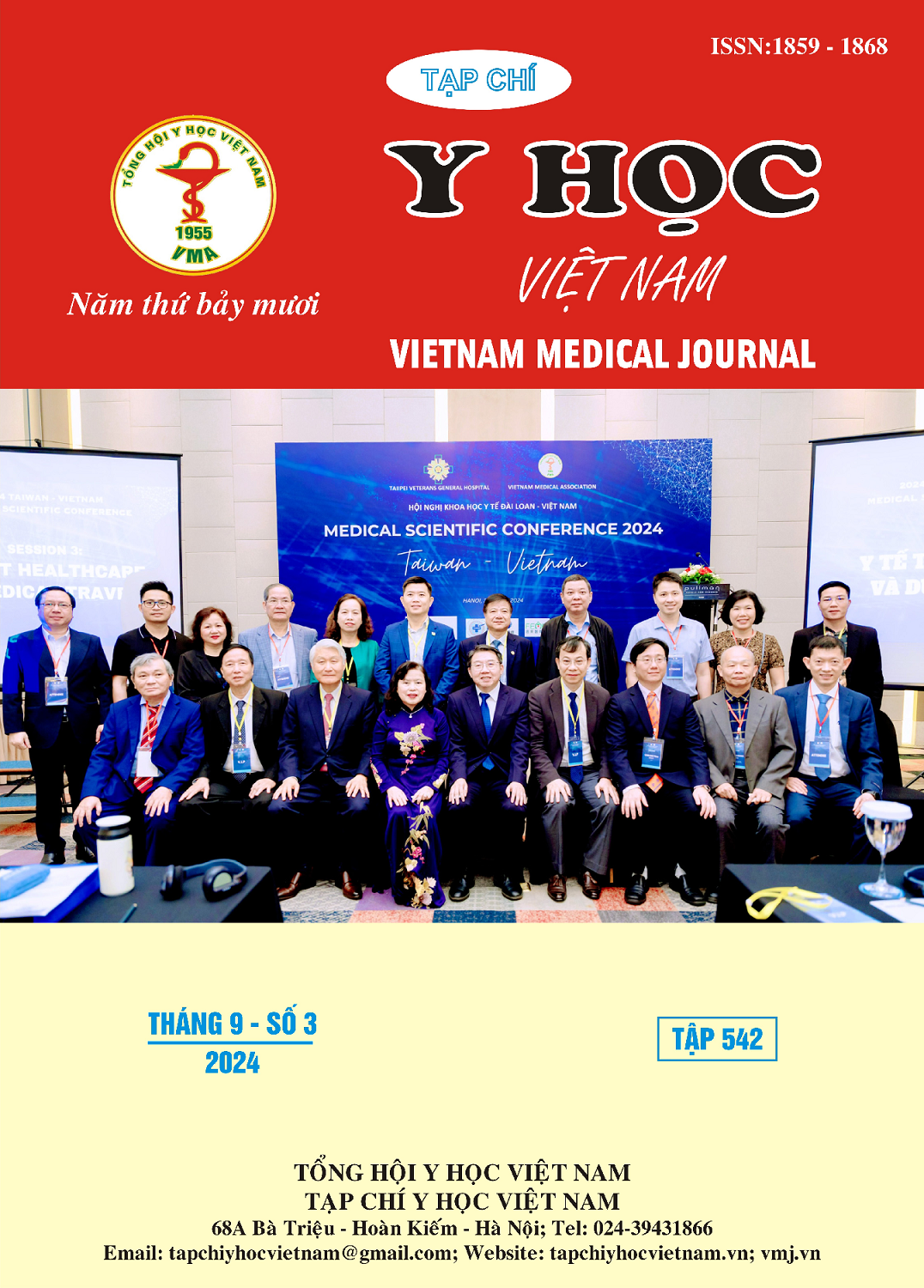STUDY OF THE CHANGES AND PROGNOSTIC VALUE FOR MORTALITY OF BLOOD LACTATE LEVELS AFTER LIVER TRANSPLANTATION
Main Article Content
Abstract
Objectives: To determine the changes in blood lactate concentration and to evaluate its prognostic value for 30-day mortality after liver transplantation at different time points: preoperative, intraoperative, and postoperative. Method: A retrospective, descriptive study of 97 patients who underwent liver transplantation from living donors at the 108 Military Central Hospital from January 2022 to February 2024. Results: The mean blood lactate concentration increased progressively from the preoperative period, peaking immediately postoperatively at 6,5 ± 3,1 mmol/L. Subsequently, the mean lactate concentration decreased over postoperative days 1 and 2, reaching its lowest value on postoperative day 3 at 1,6 ± 1,6 mmol/L. During the intraoperative and immediate postoperative periods, the lactate levels were significantly higher in the mortality group compared to the survival group (p<0,05). The lactate levels during these periods demonstrated prognostic capability for 30-day postoperative mortality with an AUC of 0,775 and 0,811, respectively (p<0,05). Conclusion: Blood lactate concentration progressively increases preoperatively and intraoperatively, peaking immediately postoperatively, followed by a gradual decrease postoperatively. Lactate levels during the intraoperative and immediate postoperative periods are valuable prognostic indicators of 30-day mortality post-liver transplantation.
Article Details
Keywords
Liver transplantation, prognostic value for mortality, blood lactate concentration.
References
2. L. N. Jipa, D. Tomescu, G. Droc. The interrelation between arterial lactate levels and postoperative outcome following liver transplantation. Rom J Anaesth Intensive Care. 2014; 21(2): 106-112.
3. Mai Hồng Bàng, Lê Văn Thành, Vũ Văn Quang, et al. Kết quả bước đầu ghép gan từ người hiến sống sử dụngmảnh ghép gan phải tại Bệnh viện Trung ương Quân đội 108. Tạp chí Y dược lâm sàng 108. 2021; 16(4): 1-8.
4. Lê Quang Thắng, Nguyễn Quang Nghĩa, Ninh Việt Khải, et al. Đánh giá kết quả sớm sau phẫu thuật ghép gan tại Bệnh viện Hữu nghị Việt Đức giai đoạn 2016-2021. Tạp chí Y học Việt Nam. 2023; 523(1): 16-21.
5. A. De Gasperi, E. Mazza, A. Corti, et al. Lactate blood levels in the perioperative period of orthotopic liver transplantation. International Journal of Clinical and Laboratory Research. 1997; 27(2): 123-128.
6. J. Fernández-Sarmiento, M. A. Wilches-Cuadros, R. Hernandez-Sarmiento, et al. Association Between Serum Lactate and Unsatisfactory Outcomes in Critically Ill Children in the Immediate Post-operative Period of Liver Transplantation. Front Pediatr. 2021; 9: 796504.
7. S. Coeckelenbergh, L. Drouard, B. Ickx, et al. Arterial Lactate Concentration at the End of Liver Transplantation is Independently Associated With One-Year Mortality. Transplant Proc. 2023; 55(1): 147-152.
8. A. M. Galli, R. Kothari, D. Adelmann, et al. Lactate concentration at the end of liver transplant: Early predictor of graft function or just one piece of the puzzle? Clin Transplant. 2023; 37(10): e15057.
9. E. R. R. Figueira, J. A. Rocha-Filho, C. Lanchotte, et al. Creatinine-lactate score predicts mortality in non-acetaminophen-induced acute liver failure in patients listed for liver transplantation. BMC Gastroenterol. 2021; 21(1): 252.


